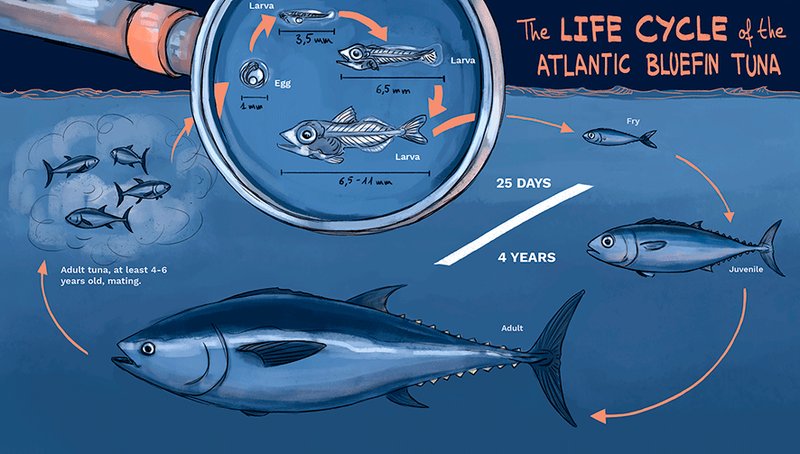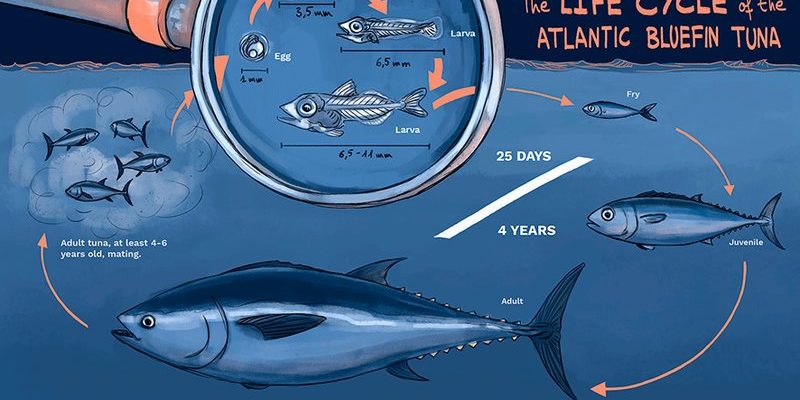
Imagine the deep blue sea as a bustling city. In this city, bluefin tunas are the powerhouses—swift and agile, making their way through the waters. Their breeding process is not just about laying eggs; it involves complex behaviors and environmental triggers. Just like a well-oiled machine, everything happens for a reason, driven by instinct and the push of nature. So, let’s dive deeper into how these magnificent fish reproduce and what that means for their survival.
Understanding Bluefin Tuna Species
Before we dive into their reproduction, let’s clarify which bluefin tuna we’re talking about. There are three primary species: the Atlantic bluefin, Pacific bluefin, and Southern bluefin. Each species has its own unique traits and breeding habits, but they also share some similarities—like their impressive size, resilience, and migratory patterns.
The Atlantic bluefin tuna is often the star of the show, with some individuals weighing over 1,000 pounds! They migrate vast distances, spawning in warm waters. Meanwhile, the Pacific bluefin tuna tends to breed in the western Pacific Ocean, and the Southern bluefin is known for its incredible endurance in swimming against strong currents. Each species has adapted to its environment in fascinating ways, which is essential for their breeding success.
Breeding Season and Migration Patterns
So, when do bluefin tunas get down to business? Typically, breeding happens during the warmer months, peaking in spring and early summer. As water temperatures rise to around 70°F (21°C), bluefin tunas begin their migration towards spawning grounds. This is key because these fish prefer specific locations, often near the surface of the water.
They travel thousands of miles, sometimes from the colder North Atlantic to warmer Mediterranean waters. Here’s a fun analogy: think of it like humans going on a summer vacation—the warmer weather sets the mood for romance! The female bluefin tuna can produce thousands to millions of eggs during a single spawning event, which sounds like quite the party!
How Bluefin Tuna Reproduce
Now, let’s talk about the actual reproduction process. It starts with a dance of sorts. Male and female bluefin tunas come together in groups during the spawning season. They swim in tandem, attracting each other with vibrant displays. Here’s the thing: this isn’t a quiet affair. The males will often compete for the attention of females, showcasing their strength and vigor.
When a female is ready to lay her eggs, she releases them into the water. The males follow closely behind, releasing sperm to fertilize those eggs. This whole process can happen multiple times during the spawning season. It’s almost like a synchronized swimming routine, but underwater! It’s important to note that not all eggs survive, and many face predation. This is nature’s way of balancing the ecosystem.
The Role of Water Temperature and Salinity
You might be wondering how the environment affects the breeding process. Well, water temperature and salinity play significant roles. Bluefin tunas are particularly sensitive to these factors. Warmer water temperatures trigger breeding behavior, while salinity levels can influence egg viability.
In their spawning grounds, the ideal conditions help ensure that the eggs float to the surface, where they can develop safely. Too low or too high of a salinity can affect their chances of survival. It’s like trying to bake a cake—if the ingredients aren’t just right, you might end up with a flop instead of a delicious treat!
Challenges to Bluefin Tuna Reproduction
Unfortunately, bluefin tuna face many challenges in their breeding journey. Overfishing, climate change, and pollution are significant threats to their populations. Overfishing has drastically reduced their numbers, making it harder for them to find mates and successfully spawn.
Moreover, shifting ocean temperatures due to climate change can lead to unfavorable conditions for breeding. If their traditional spawning grounds become unsuitable, it could disrupt the entire reproductive cycle. Think of it like a restaurant closing down—if your favorite place to eat suddenly shuts down, where do you go? The same goes for bluefin tuna.
Conservation Efforts and the Future of Bluefin Tuna
As awareness grows about the plight of bluefin tuna, various conservation efforts are underway. Many organizations are working to create sustainable fishing practices and protect breeding habitats. These initiatives are crucial in ensuring that bluefin tuna can continue to thrive in our oceans.
Additionally, some countries have implemented fishing quotas and banned certain methods that harm these fish populations. It’s all about finding a balance. After all, we don’t want to lose such a magnificent creature from our seas. Supporting these conservation efforts isn’t just important for the bluefin tuna; it helps maintain the overall health of our marine ecosystems.
Breeding and reproduction of the bluefin tuna is a captivating process that reflects the beauty and intricacy of nature. From their lengthy migrations to the delicate balance of water conditions, every aspect plays a crucial role in their survival. As we face challenges from overfishing and climate change, understanding and conserving these magnificent fish becomes even more important.
In a world where we often overlook the small details in nature, the reproductive habits of bluefin tuna remind us of the intricate dance of life. By supporting conservation efforts, we can help ensure that future generations experience the wonder of bluefin tuna in our oceans. Let’s work together to keep this magnificent species swimming strong!

